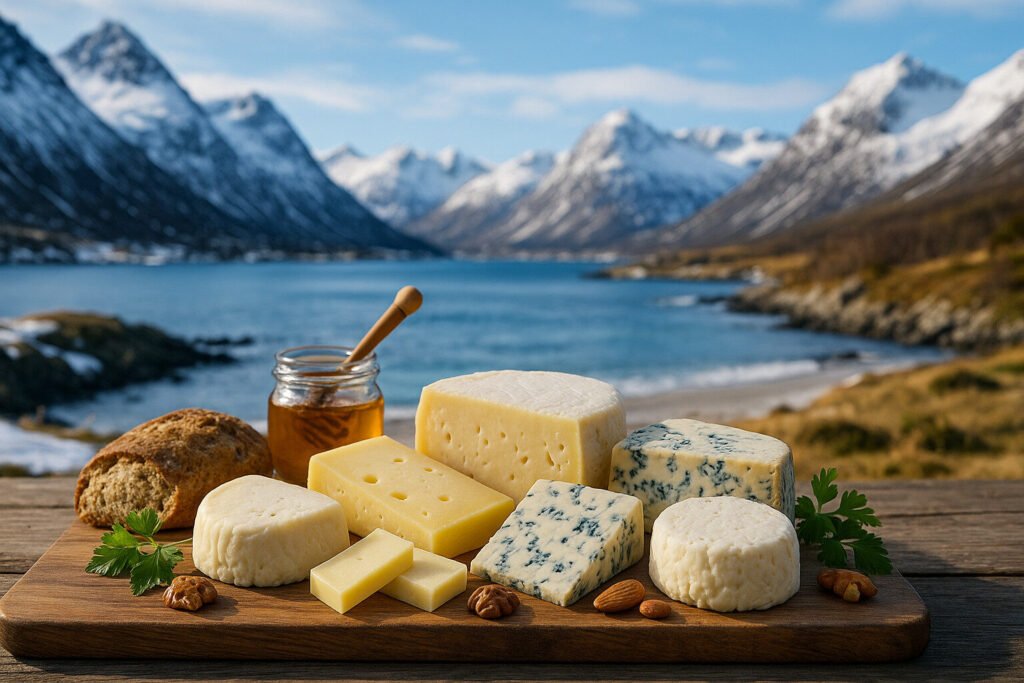Cheese Of Yamal Peninsula
Definition and Scope
Cheese from the Yamal Peninsula represents a category of artisanal dairy products crafted by the Nenets people in northwestern Siberia. These cheeses are traditionally made from reindeer milk, which distinguishes them from conventional bovine or caprine varieties. The harsh Arctic climate and nomadic lifestyle shape their unique production methods and preservation needs.
These cheeses fall within the broader classification of farmstead or tribal cheeses, often unaged and consumed fresh due to limited refrigeration. Their scope includes both soft, spreadable forms and lightly pressed varieties. The use of reindeer milk imparts a high fat content and distinct nutritional profile uncommon in global cheese taxonomy.
Production Methods
Traditional Yamal cheese production begins with fresh reindeer milk, which is naturally fermented using ambient bacteria in leather containers. The curdling process relies on acidic development rather than commercial rennet, resulting in a delicate coagulation. Nomadic producers typically use minimal equipment, often straining the curds through woven hair or cloth bags.
The pressed varieties undergo light weighting using stones or wooden implements to expel whey. No artificial preservatives or additives are incorporated, with preservation achieved through natural drying in the cold, dry Arctic air. Production occurs seasonally, aligned with reindeer calving periods when milk is most abundant.
Sensory Profile
Yamal Peninsula cheeses present a pronounced gamey aroma derived from the reindeer milk’s diet of lichens and Arctic vegetation. The flavor profile combines tangy lactic notes with underlying savory tones reminiscent of wild mushrooms. Textures range from creamy and spreadable in fresh versions to semi-firm in lightly pressed specimens.
Their pale ivory color reflects the high-fat reindeer milk, lacking the yellow pigments found in cheeses from grass-fed animals. The mouthfeel is notably rich and unctuous due to the milk’s elevated butterfat content. Salinity remains minimal as salt is used sparingly in traditional preparations.
Culinary Applications
These cheeses serve as essential nutrition sources in the traditional Nenets diet, often consumed alongside raw frozen fish and reindeer meat. Fresh varieties frequently accompany unleavened bread or are spread on smoked fish. Their high caloric density makes them valuable for sustaining energy in extreme cold conditions.
Contemporary applications include incorporation into modern Siberian cuisine as specialty ingredients. Chefs use them in stuffed pastries, as accompaniments to forest berries, or melted over roasted game meats. Their robust flavor allows them to stand alone as table cheeses without requiring additional seasoning.
Regional Variations
The Yamal-Nenets Autonomous Okrug produces several distinct cheese styles corresponding to different Nenets subgroups. Coastal communities create slightly saltier versions using seaweed ash during pressing. Tundra-dwelling nomads produce smoked varieties over dwarf birch fires, imparting a subtle woody aroma.
Seasonal variations occur between summer cheeses, which tend to be softer and more acidic, and winter versions that are denser and less moist. The eastern Yamal regions near the Urals incorporate wild herbs into their cheese preparations. These micro-regional differences reflect localized environmental conditions and cultural practices.

